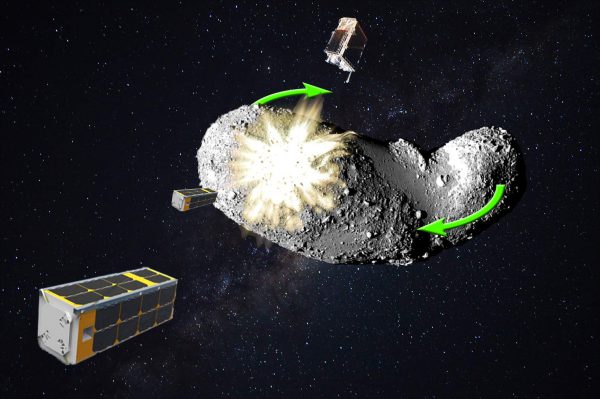
The so-called Neotwist project, a collaborative EU-funded initiative that includes a team from Airbus Defence and Space in Stevenage, is one of a number of technologies under discussion this week (15 – 18 May, 2017) at the Planetary Defence Conference in Tokyo.
Despite being a staple of science fiction stories – perhaps most notably in 1998 disaster movie Deep Impact – comets and asteroids do pose a real threat to the Earth and collisions have taken place frequently over geological history. It’s thought that past impacts have probably altered the evolutionary course of life on Earth by, for instance, triggering the extinction of the dinosaurs.
There are currently thought to be around 1600 near Earth objects (NEOs) considered by scientists to be potentially hazardous (i.e. having orbits that can bring them within 7.5 million kilometres of the Earth’s orbit and are large enough (diameter ≥ 100 m) to destroy a large city or urban area and kill millions of people.
What’s more, even relatively small impacts can cause considerable damage. For instance, the asteroid that exploded over the Russian city of Chelyabinsk in February 2013 had a diameter of only 18m yet produced a blast wave that damaged buildings and injured around 1500 people.
A number of different mitigation strategies have been proposed over the years – ranging from detonating incoming asteroids with nuclear missiles; to the development of gravitytractors: devices that would fly alongside asteroids for long periods of time and slowly pull them out of Earth’s path.
The main aim of the proposed NEOTWIST mission, which is part of a broader project dubbed NEOSHIELD, is to advance knowledge of precisely how the path of asteroids could be altered, by firing a kinetic impact at an asteroid and using telescopes on Earth alongside a small observation module, which is separated from the main kinetic impactor spacecraft just before impact to measure changes.

Ulrich Johann, Head of Future Programmes, at Airbus’ Science and Earth Observation department in Friedrichshafen, Germany said: "The NEOTWIST concept combines an impactor and an in situ monitoring module in a single spacecraft. This cost-effective approach providing on the spot observation capabilities should lead to more launch opportunities for NEOTWIST compared to other concepts."




April 1886: the Brunkebergs tunnel
First ever example of a ground source heat pump?